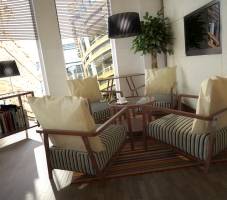January 12, 2015
Aging workforce driving uptake of flexible working in UK firms
 A growing number of employers see flexible working arrangements as an important tool for meeting the needs of their aging workforce, according to a new report from insurance industry trade association Group Risk Development (GRiD). The report highlights how changing attitudes, demographics, longer life expectancy and the abolition of the UK’s Default Retirement Age three years ago have encouraged employers to look at how to foster the wellbeing and meet the needs of older employees. Over a quarter (27 percent) of the 500 UK businesses who took part in the study had introduced flexible working specifically to meet the needs of their ageing workforce and many (22 percent) of employers said dealing with an ageing workforce was among their top three wellbeing issues.
A growing number of employers see flexible working arrangements as an important tool for meeting the needs of their aging workforce, according to a new report from insurance industry trade association Group Risk Development (GRiD). The report highlights how changing attitudes, demographics, longer life expectancy and the abolition of the UK’s Default Retirement Age three years ago have encouraged employers to look at how to foster the wellbeing and meet the needs of older employees. Over a quarter (27 percent) of the 500 UK businesses who took part in the study had introduced flexible working specifically to meet the needs of their ageing workforce and many (22 percent) of employers said dealing with an ageing workforce was among their top three wellbeing issues.








 A report published at the end of December
A report published at the end of December














January 9, 2015
O2’s dogmatic approach to flexible working sends the wrong signals
by Mark Eltringham • Comment, Flexible working, Technology, Workplace design
(more…)